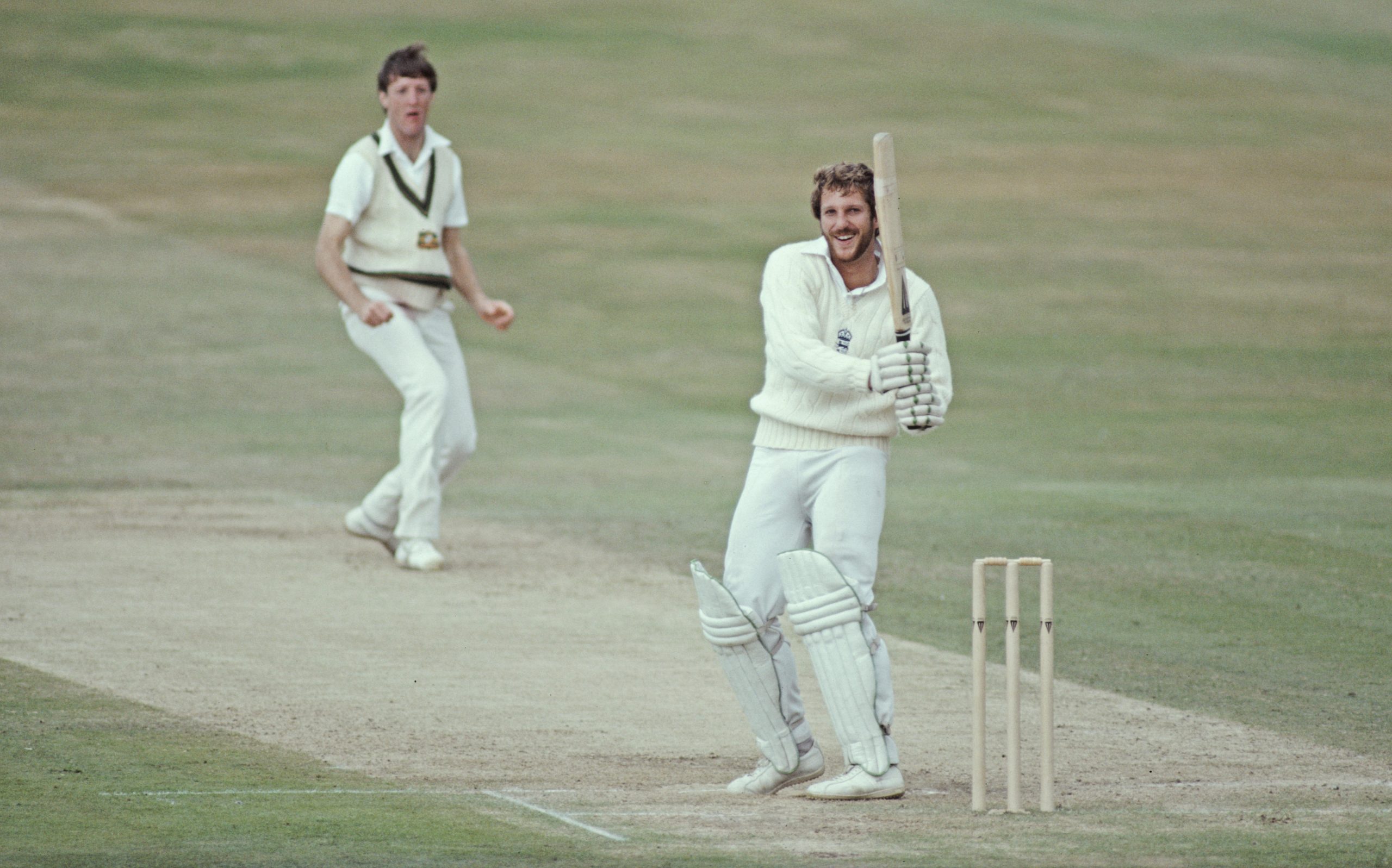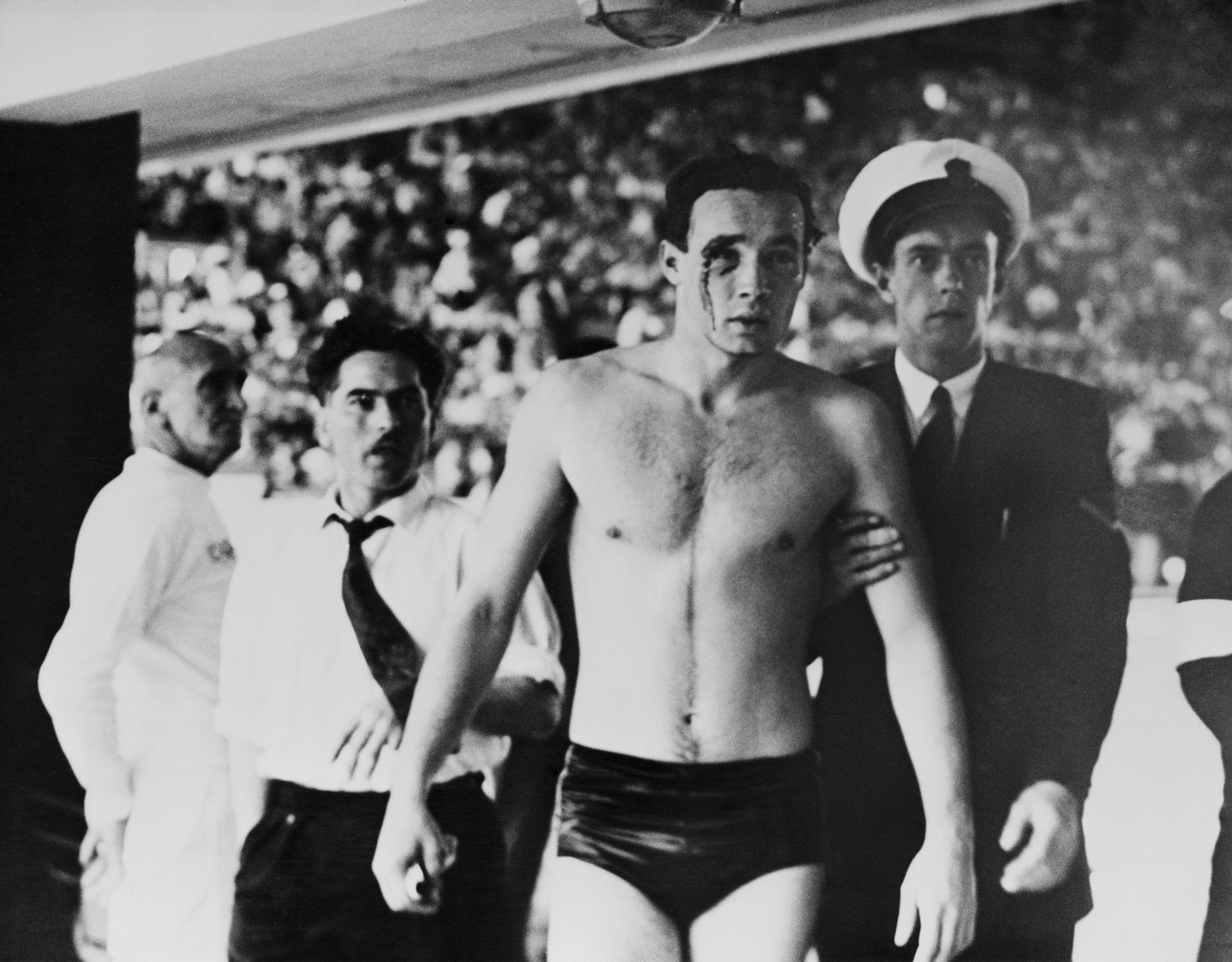
Credit: Adrian Murrell/Allsport
The summer of 1981 was the summer of the Royal wedding and of Botham’s Ashes. Thanks to TV and press coverage, the ceremony at St Paul’s Cathedral and the Test series became intertwined in the country’s collective memory of those hot, heady months. Ian Botham was a real-life Boys Own hero, Diana a real-life fairy tale princess.
They were portrayed as being emblematic of a patriotic, Union flag-waving Britain. Yet for many, this was not a country they recognised. For them, the UK was beset by economic decay, racial tension and riots.
In July, Botham helped England snatch victory from the jaws of defeat with an unbeaten 149 in the third Test at Headingley. With three days played, the team been written off as 500/1 outsiders by the bookies. But they sealed victory by 18 runs before winning the next two Tests to retain the Ashes.
Botham had been captain at the start of the series but quit before he was sacked after an ignominious pair in the second Test at Lords. Yet by the end of the series, he had become a national hero once more, his redemption arc exaggerated by the failure that had come immediately before.
The presence of the cameras at Headingley embedded the match, and Botham’s performance, into the public consciousness. Only a few thousand people were in the stands to see him knock the ball around the ground with carefree abandon in the second innings (not least because the prospects of an England victory had seemed so small) but millions watched at home.
The BBC devoted hours a day for days at a time to the sport, the overwhelming majority of which was live. It dominated other sports. Televised football was conspicuous by its absence, furthermore the sport was heading towards a dark nadir.
Barely a week before the Ashes started, England hooligans went on the rampage in Basel following an embarrassing defeat to Switzerland. One newspaper claimed, “we leave our mark in Europe not through the skill of our players but by the riots”. The Union Jack had, it lamented, had “become a flag of shame”.
Yet a few weeks later, the same flag was central to the celebrations of the wedding of Prince Charles and Lady Diana Spencer. There were 3,500 guests, 28.4m watching at home and 750m more watching in 74 countries worldwide. There were street parties across the country. Trestle tables buckled under the weight of sandwiches, orange squash and beer.
Robert Runcie, the Archbishop of Canterbury, who was presiding over the nuptials, proclaimed that: “Here is the stuff of which fairy tales are made.” The media and many of the public lapped up the analogy.
Yet not everyone saw the country that way. Not everyone was waving a flag and celebrating. Kiri Te Kanawa, the New Zealand soprano, entertained the wedding guests with a performance of Let the Bright Seraphim from Handel’s Samson, but it was The Specials’ melancholic lament about inner city life Ghost Town that was echoing around the country. Jerry Dammers, who wrote the song, would later say he was trying to convey a sense of “impending doom” in a country that was “falling apart”.
Behind the pomp and ceremony of the Royal wedding and the national pride engendered by Botham’s heroics a different, febrile Britain was at boiling point. When the England and Australian teams arrived at the Headingley stadium in Leeds, the city had barely recovered from the Yorkshire Ripper’s reign of terror. Peter Sutcliffe, who had murdered at least 13 women between 1975 and 1980, had been arrested at the turn of the year and convicted in May.
The same month, IRA member Bobby Sands died in the Maze prison after 66 days of hunger strike. Another nine prisoners would die before the strikes ended in October, an occasion that was marked by the bombing of the Chelsea Barracks, which left two dead and 40 injured. In June 17-year-old Marcus Sarjeant shot six blank rounds at the Queen during Trooping the Colour.
Earlier in the year, 13 young black people were killed when a blaze engulfed a house party in New Cross Road in Brixton. A 14th victim would later take their own life. Fifty more were injured. There was widespread anger among the African-Caribbean community at the lacklustre police investigation, which dismissed racism as a motive despite a history of such incidents over the previous ten years. The National Front had claimed responsibility on at least one occasion.
This was compounded by the inquest which recorded an open verdict, rejecting the widespread belief that the fire was the result of arson. No one was ever charged. At the same time, the newly instituted ‘sus laws’ led to a disproportionately high number of black men being stopped and searched by police.
All this was playing out against the backdrop of a shrinking economy. For good or ill, Margaret Thatcher’s ‘harsh medicine’ was taking effect. The country was in the grip of a recession. Some 2.65m were out of work – nearly double the figure two years previously. Inflation had hit 11.9%.
Economic discontent coupled with the racial tension triggered major riots across the country in Brixton, Toxteth, and Handsworth. A week before the Headingley Test, police clashed over two nights with a 200-strong group of youths in Chapeltown, just two miles from the ground. Cars and a police van were overturned. Shops were looted and petrol bombed. Police even claimed to have come under fire from a sniper with an air rifle. There were further disturbances in numerous towns and cities up and down the country.
The Royal Wedding and Botham’s Ashes provided succour for those who cleaved to bucolic notion of the country. Yet rarely are events as simple as they seem. Our understanding of them and our shared memory is shaped and framed by the coverage the media provides and the narratives they create. Then as now the summer provided a snapshot of a deeply divided nation, one which had frustrations and injustices that continue to simmer four decades later.


